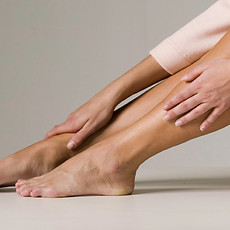
What is Venous Disease?
Venous disease of the lower extremities is a very common problem. Varicose veins affect approximately 40% of women and 25% of men. Every 8th person already has an advanced venous disorder which requires treatment. Varicose veins and varicose vein ulcerations are not only unslightly but also very painful and they can result in a considerable morbidity to the patient with significant time off work. Venous disorder can range from small spider and reticular veins which are small, flat, red, or purple veins and are close to the skin surface or they may be bulging rope like cords on the legs anywhere from the groin to the ankle.
Normal Vein Functions
Normal vein function should carry blood from the tissues back to the heart. In the leg, this means that blood has to flow upward against the force of gravity. Therefore, these veins have one-way valves which prevent the back flowing of blood. Patients who have varicose veins, have valves which fail to close properly and tightly. As a result, blood back flows down the vein causing the blood to pool and causing the bulging and twisting which is characteristic of varicose veins.

What Leads to Venous Disorders?

There are many factors which can lead to the development of venous disorders. In most cases, the disease does not just come out of the blue. There are typical warning signs like aching, cramping, heaviness, tiredness, burning or tingling sensation, swelling or throbbing pain, and tenderness around the veins. The symptoms may then progress to result in inflammation of the vein i.e. thrombophlebitis, blood clots, DVT, and venous skin ulceration especially around the area of the ankle and bleeding varicose veins. Anyone who becomes aware of these danger signs should consult their doctor without delay. The sooner the treatment is started, the better the chance for cure.